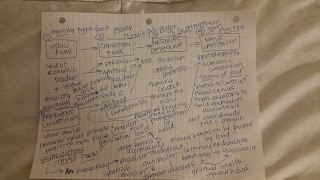After searching the Missouri Compromise and discovering what it changed, it is clear to see the major step in history that this era took. It took a step towards making the Union equal because this was a time of seperation between pro slavery and anti slavery states. During this time tensions were high because nobody wanted to be forced to be against what they believed in but eventually a middle was found that maintained the balance between free and slave states. In the following examples you can see the transformation towards a together and whole new Union and the way Henry Clay was an epic hero by bringing forth a conclusion.































